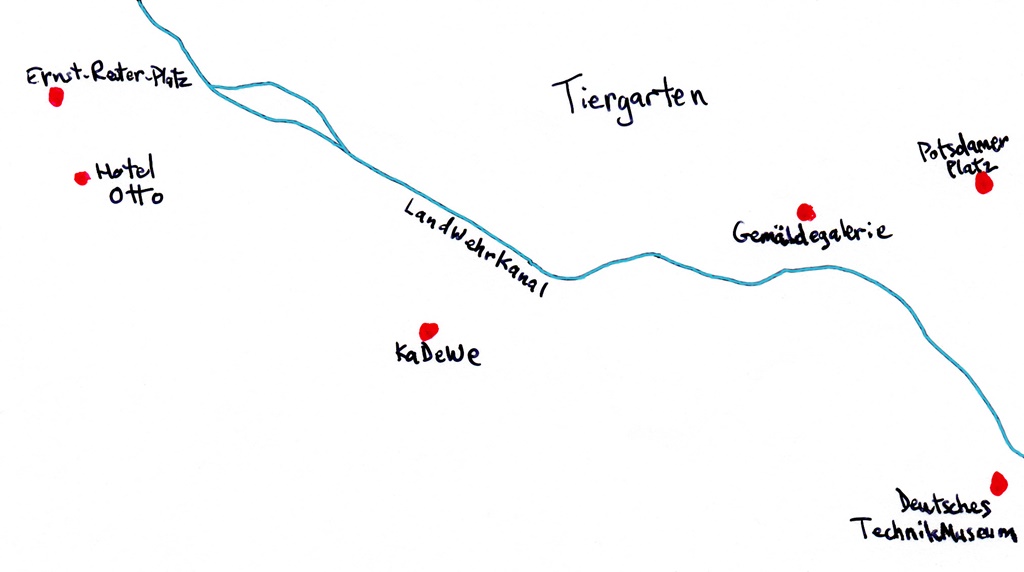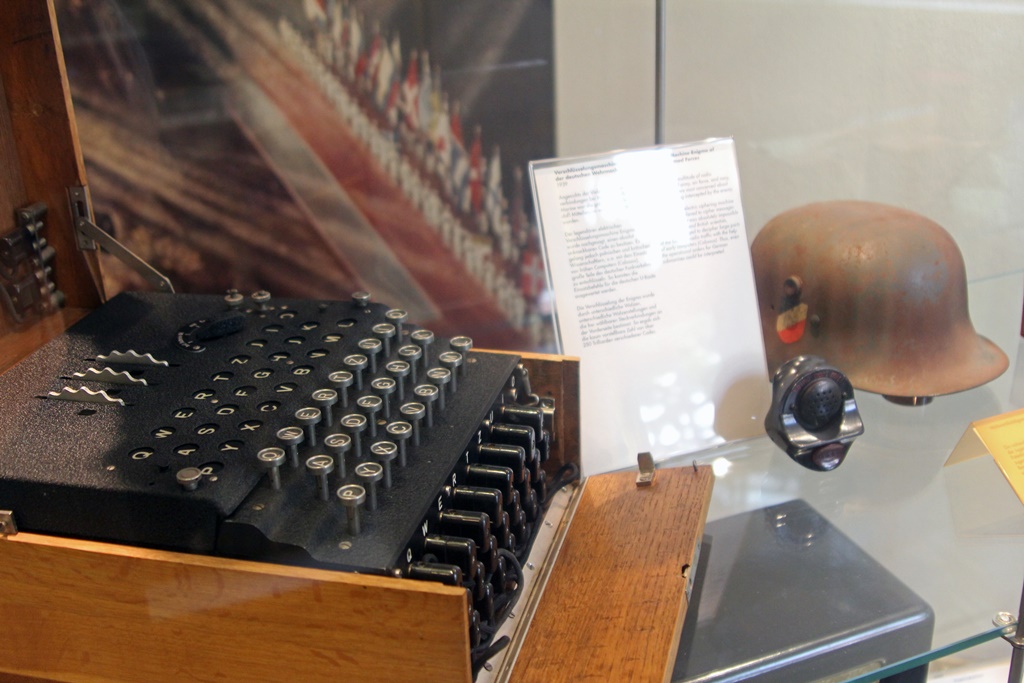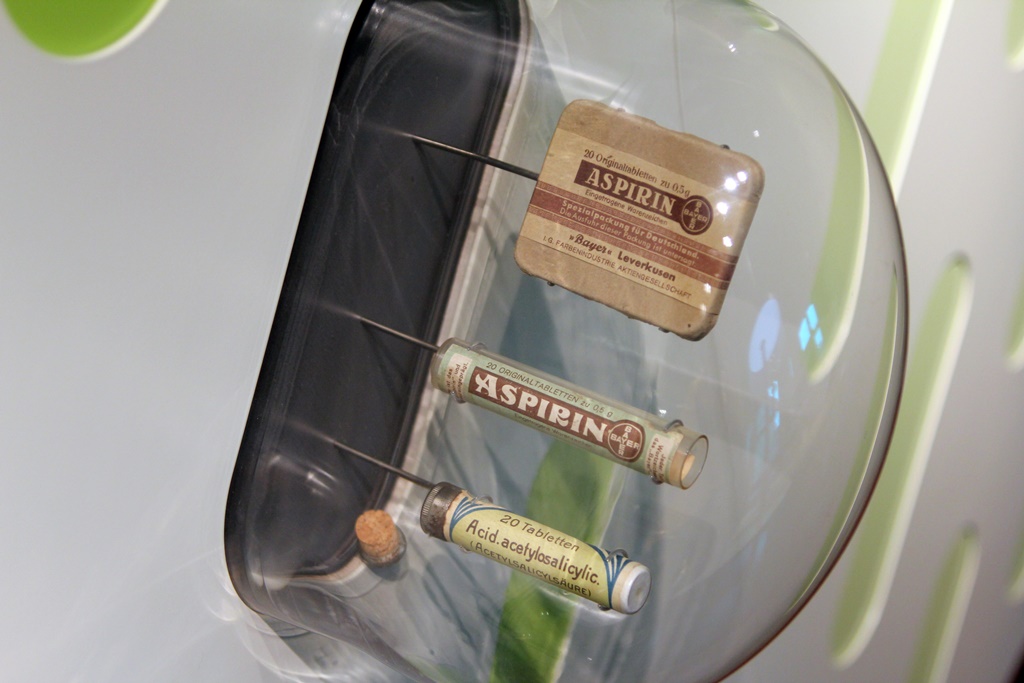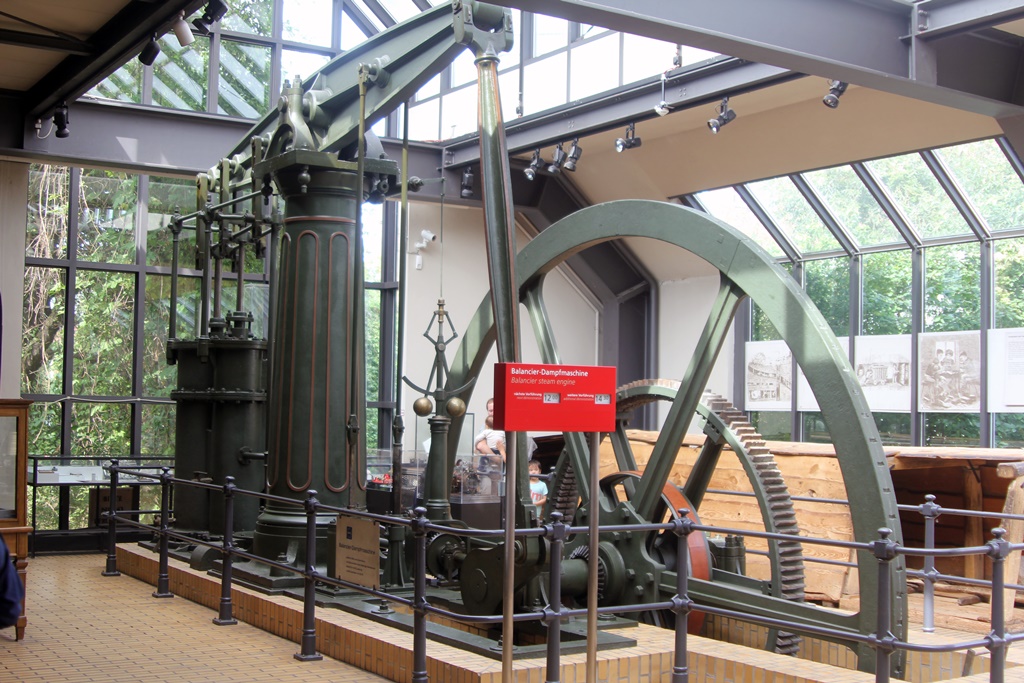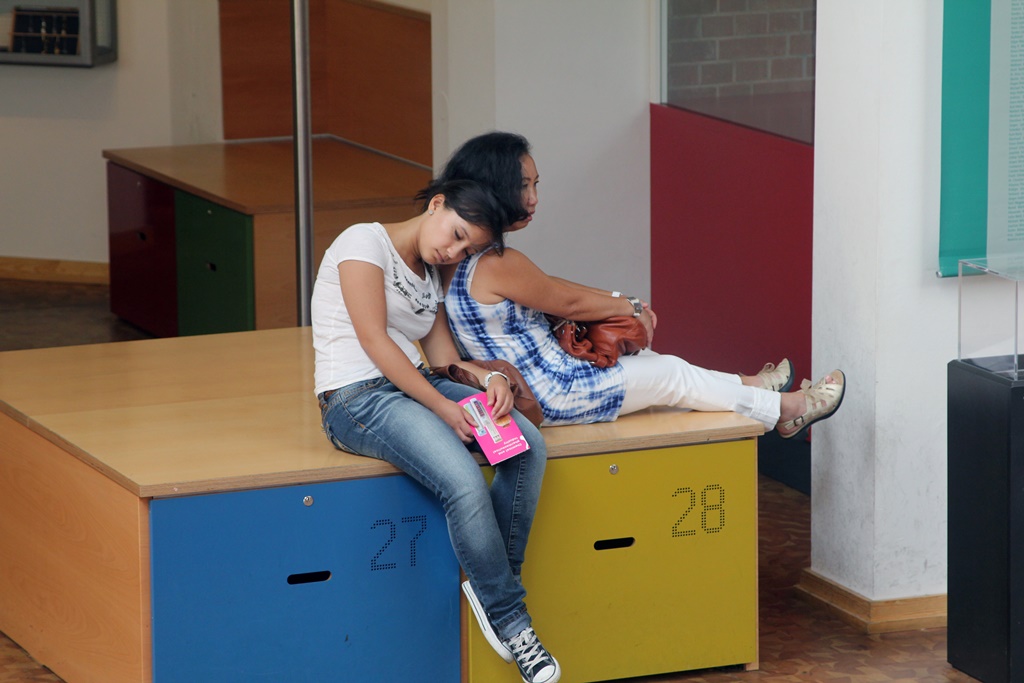Western Berlin
Our desire to visit the Deutsches Technikmuseum made it necessary to establish an
acquaintance with the Berlin U-Bahn. The U-Bahn, short for Untergrundbahn
("underground railway"), is the Berlin subway system. It’s pretty extensive, consisting
of nine different lines, numbered U1 to U9. There was a station on the U2 line in the
nearby Ernst-Reuter-Platz, at which we boarded a train after buying some tickets from an
automated ticket vending machine.
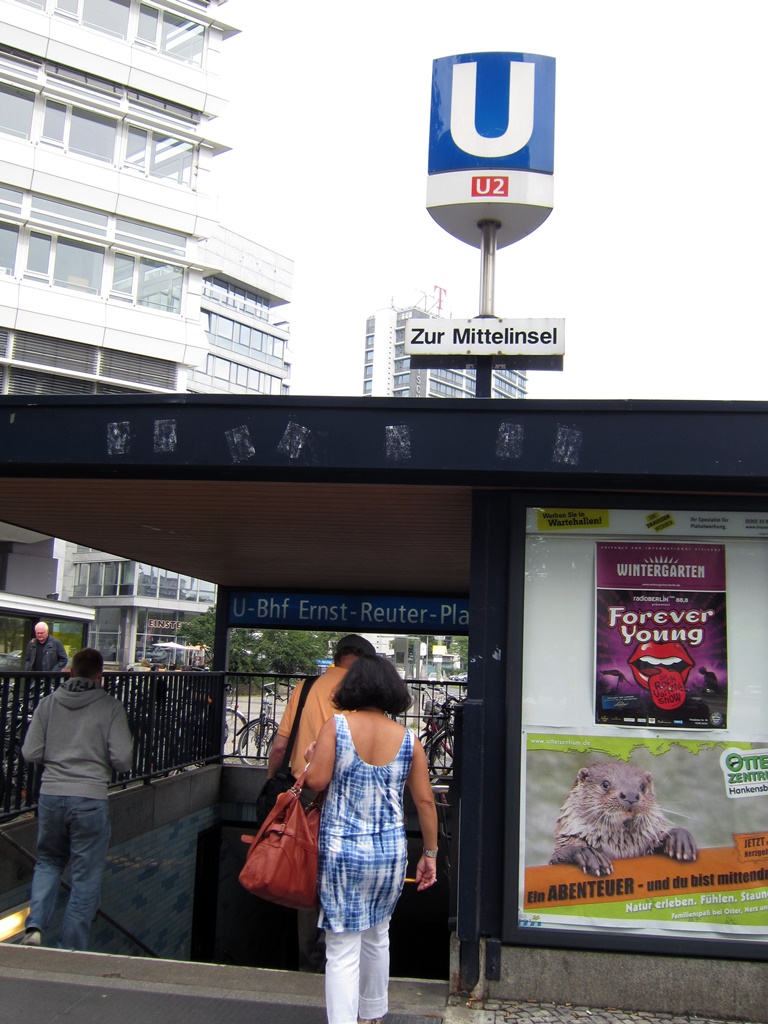
Bob and Nella and the U-Bahn Station

Bob Stymied by Technology
On disembarking from the train at the Gleisdreieck station, we had a general idea
of how to get to the museum, but had to search around a little. We eventually came
across a building with an airplane protruding from its front, and we knew we were in
the right place.

Bob and Nella and Front of Museum
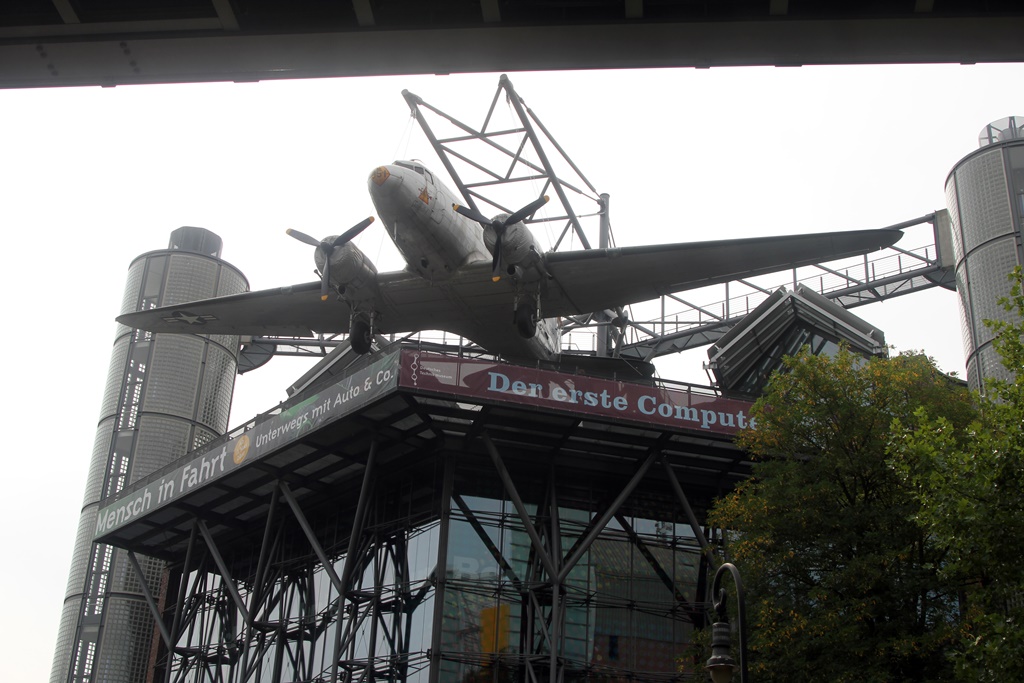
Douglas C-47 Skytrain Raisin Bomber
The airplane in question is a Douglas C-47 Skytrain, an American plane that saw
service during the Berlin Airlift of 1948-49. The Airlift was a massive air supply
operation that was launched when the Soviets attempted to take over the western
part of Berlin by blockading ground supply access to it. Apparently the Soviets
wanted to starve the Berliners into begging for help from them. This didn’t work
because of the American and British operated Airlift. One of the American pilots
came up with the idea of dropping sweets to children who lined the perimeters of the
Berlin airfields, delivering them in packages with little parachutes. As a result
the Berliners started to call the planes Rosinenbomber, or Raisin Bombers.
Below the plane we found a sign that showed the museum's layout and pointed us to
the entrance, and we headed in that direction.
Museum Sign
The Deutsches Technikmuseum Berlin
(German Museum of Technology) was founded in 1982
and is partly housed in buildings once attached to a train station that closed in 1952.
It celebrates many forms of technology of the past and present. We entered the museum
and found ourselves confronted by another piece of German aviation history.
Mathias Rust was an 18-year-old Hamburg-area amateur pilot in the year 1987. It was at
this time that he conceived an idea of visiting Soviet Russia by air, building an
"imaginary bridge" to the East. He outfitted a rented Cessna 172 with auxiliary fuel
tanks and eventually took off from Helsinki, Finland, on May 27, 1987, bound for
Moscow. He disabled his radio equipment, so nobody could tell him what to do, and
entered Soviet air space. His plane was quickly detected by air defense radar, and he
was tracked by SAM missiles and interceptor jets, but apparently due to confusion
and/or bureaucracy, permission was never given to attack or otherwise engage the plane.
Rust eventually appeared above Moscow, landed on a bridge that was closed to traffic
for maintenance, and taxied past St. Basil’s Cathedral to within 100 yards of Red
Square. It didn’t take long for the Soviet authorities to arrest him.
Rust was eventually tried and convicted of a number of charges, and did some time in a
detention center in Moscow, but was released in 1988 without completing his sentence
as a gesture of goodwill. On returning home he was fined about $100,000 for violating
an assortment of aviation laws, but was able to sell the rights to his story to the
German magazine Stern. Back in Moscow, many Soviet defense officers were
relieved of their jobs for incompetence in defending the country. As it turns out,
some of those removed were hard-line Soviets, and their removal made it easier for
then-premier Mikhail Gorbachev to pursue reforms that eventually led to the end of the
Cold War. Rust’s airplane was placed on exhibit in Japan for a number of years, but
in 2008 it was returned to Germany, where it’s now suspended in the lobby of the
Deutsches Technikmuseum Berlin.
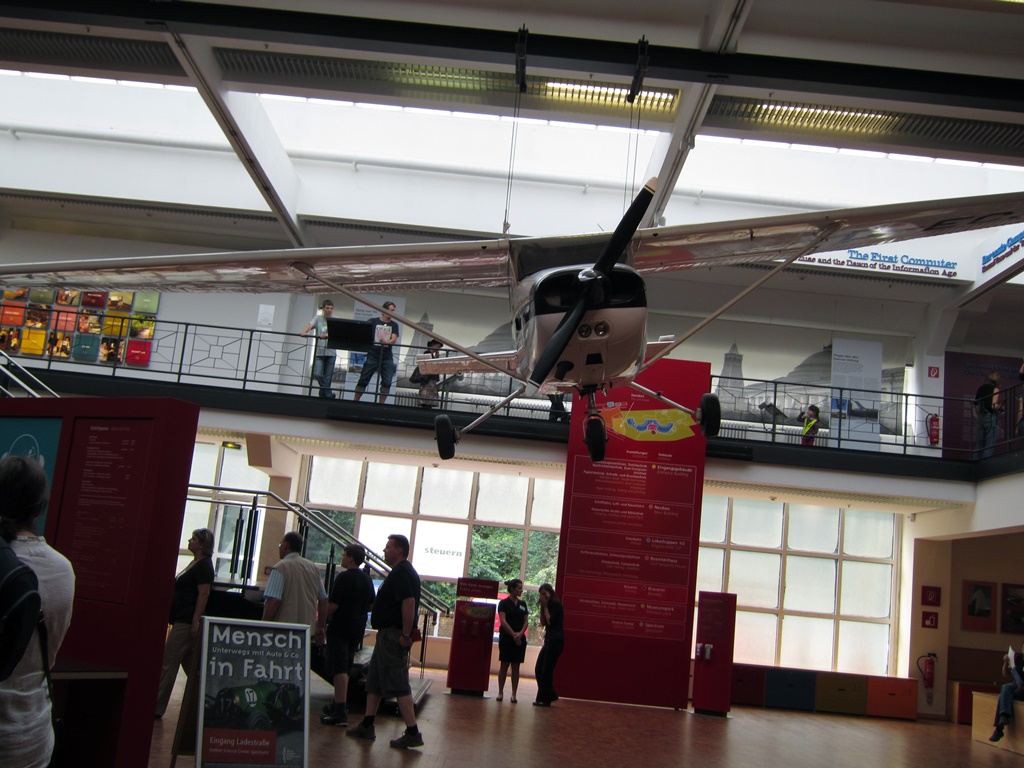
Cessna 172 Flown by Mathias Rust

Mathias Rust's Cessna
Germans have long been interested in technology, and have been enthusiastic participants
in its history. This is reflected in the museum’s collection, which is large and varied.
Upstairs from the Cessna, we first came across a fairly large exhibit on computer
technology.
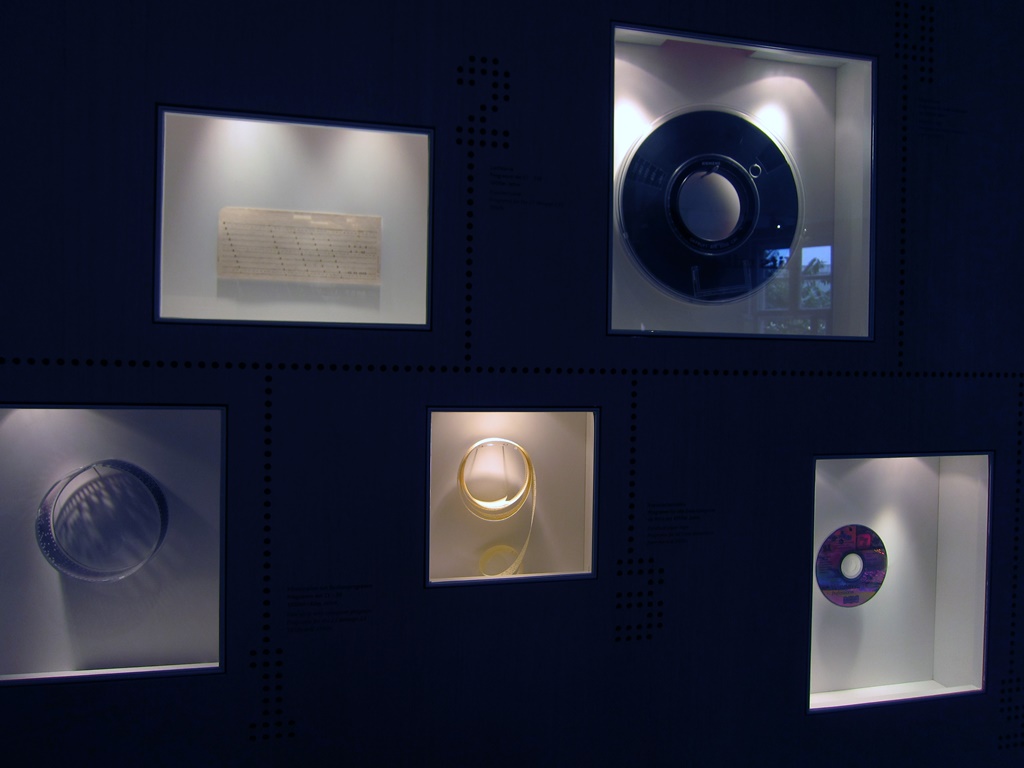
Evolution of Data Storage
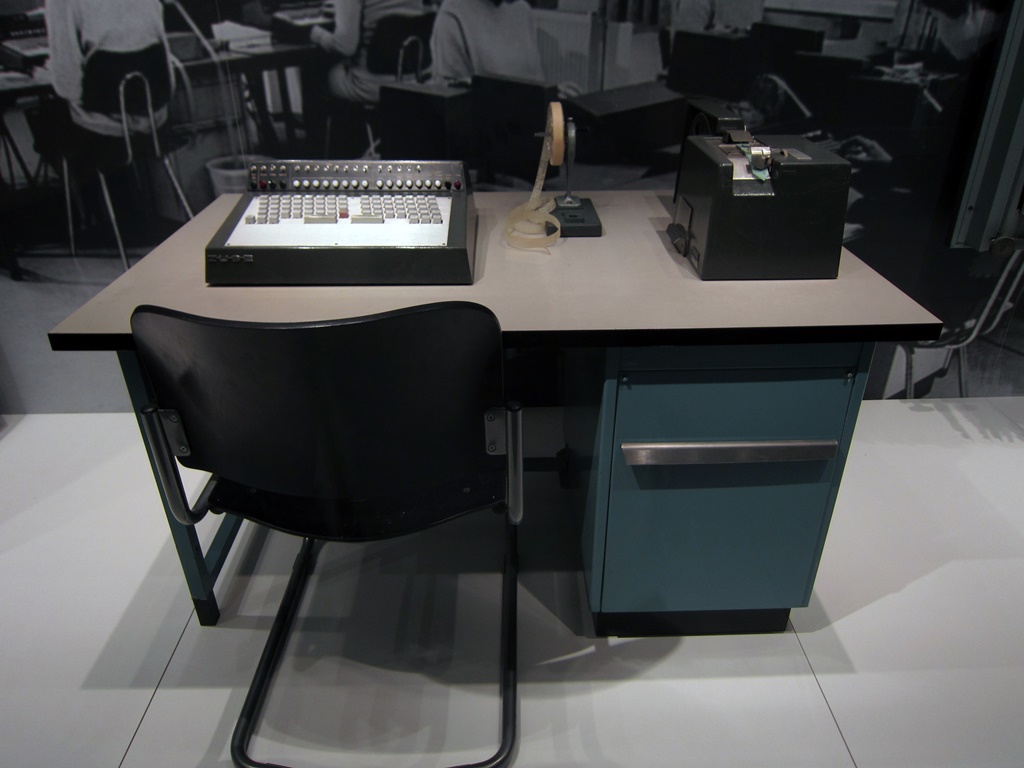
Late 60's Computer Console
Pre-dating modern computers, and more mechanical than electronic was an Enigma
coding/decoding machine used by the Germans (and hacked by British codebreakers)
during World War II.
Enigma Machine
Many examples of early communications and broadcasting equipment were also on display.
Early Telephones
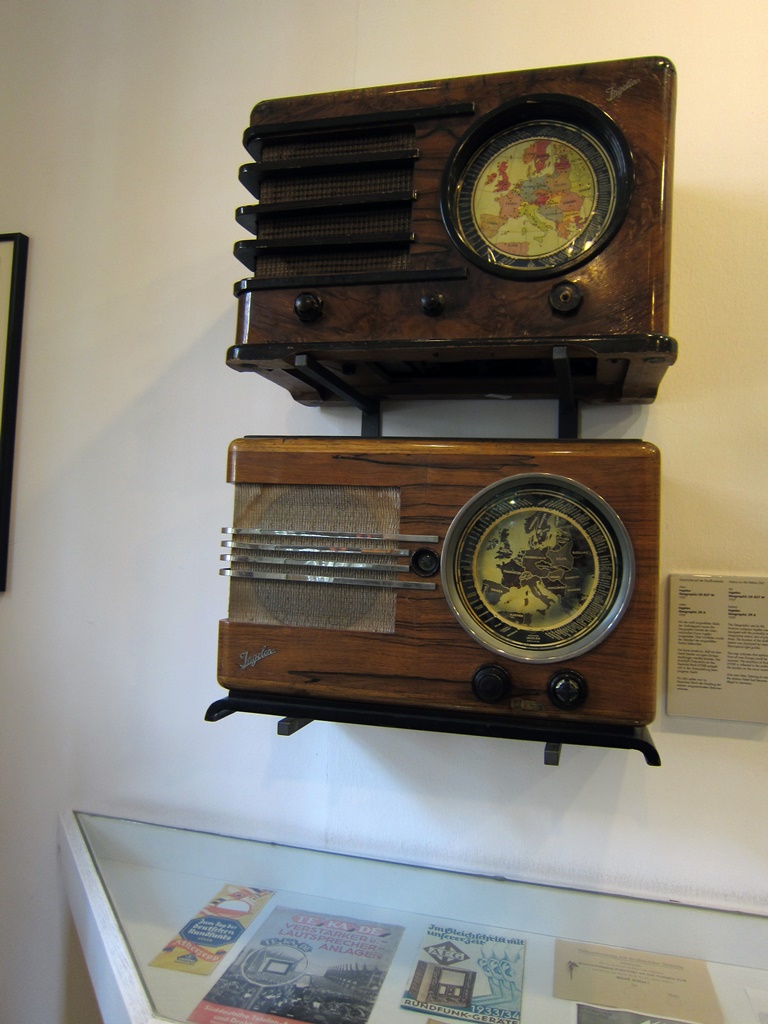
Radios
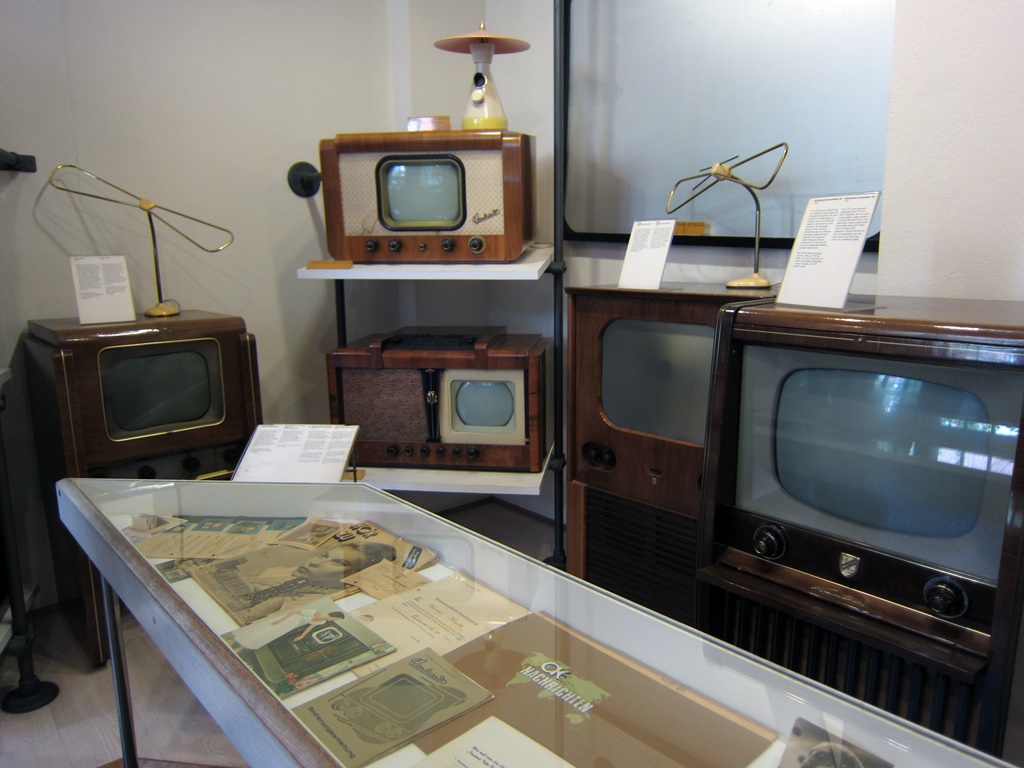
Televisions
There were also many devices used to capture and enjoy audio recordings,
as well as still and moving pictures.
Gramophones and Cylindrical Recordings
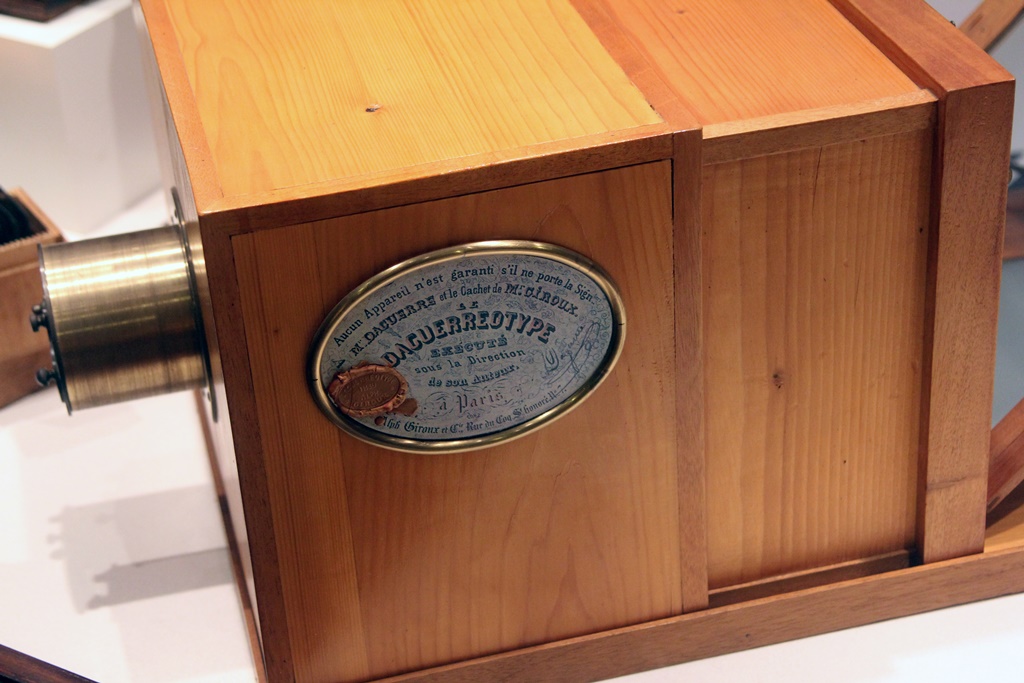
Daguerreotype Machine (Early Camera)

Personal Cameras
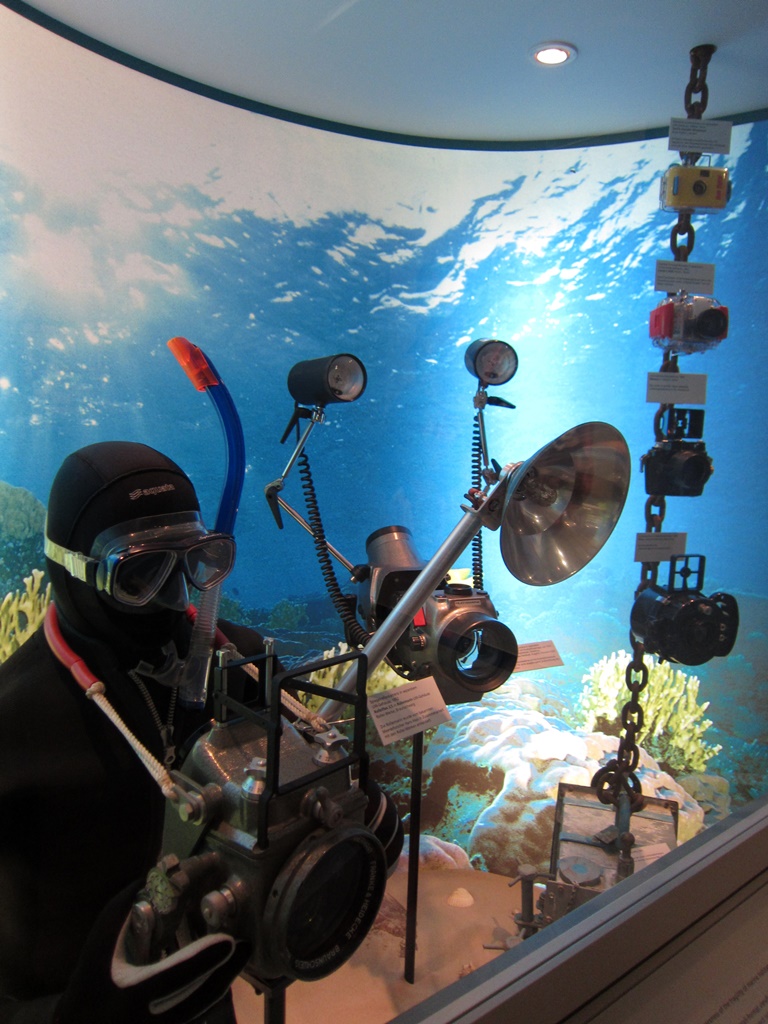
Underwater Cameras

Exploded Cameras

Early Animation

Movie Cameras and Projectors
Exhibits on textile production highlighted its connection with early computer technology,
with mechanical looms and embroidery machines that ran according to instructions fed in
on punched cards or paper tape, long before the same media were applied to computing.
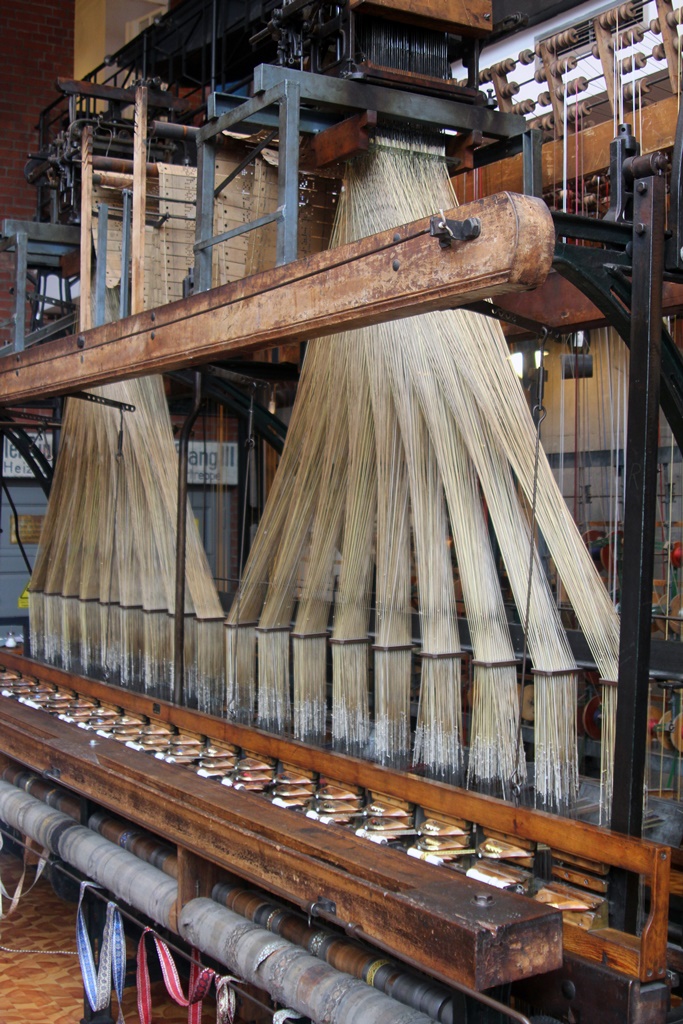
Mechanical Loom
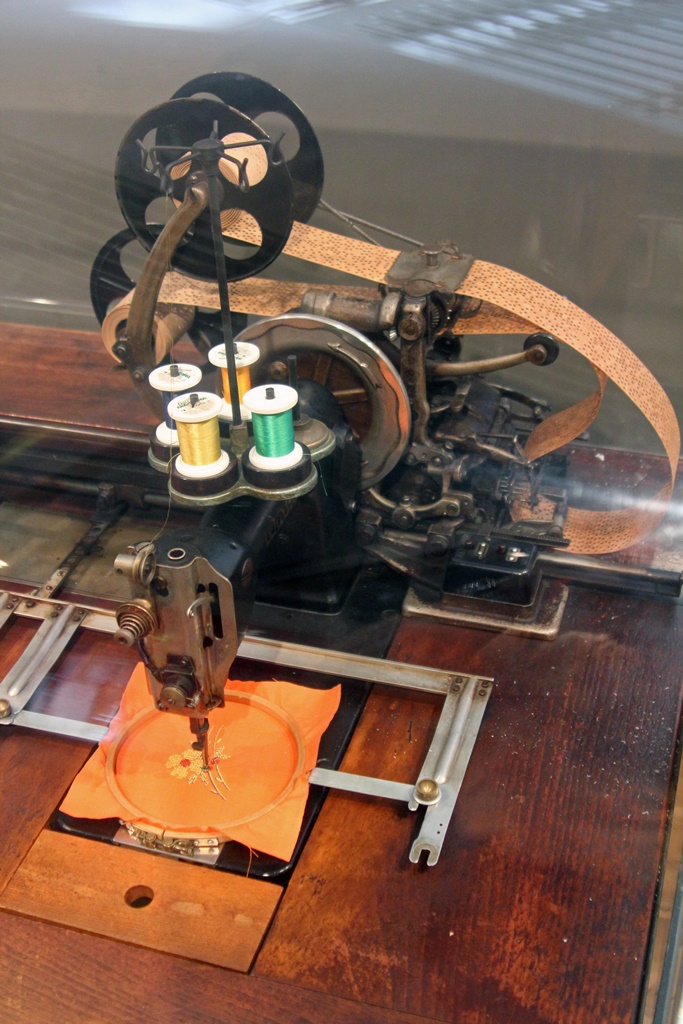
Embroidery Machine
Cord Braiding Machine
An extensive display on pharmaceutical research and production reflected heavy
and influential German participation in the field.
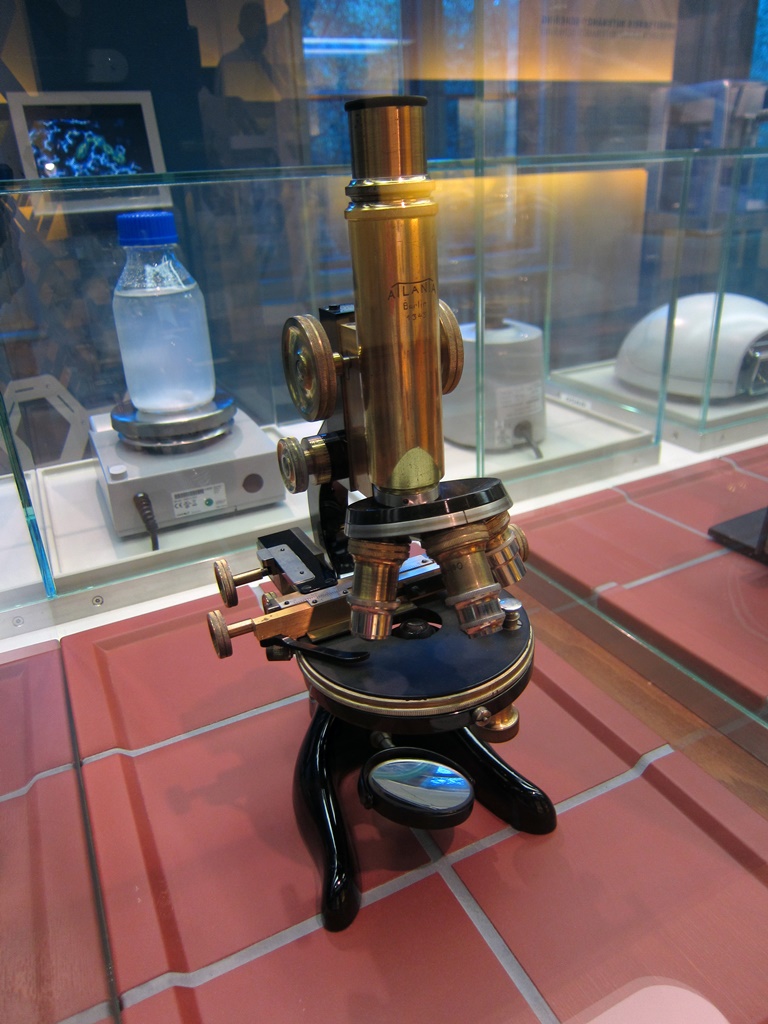
Classic Microscope
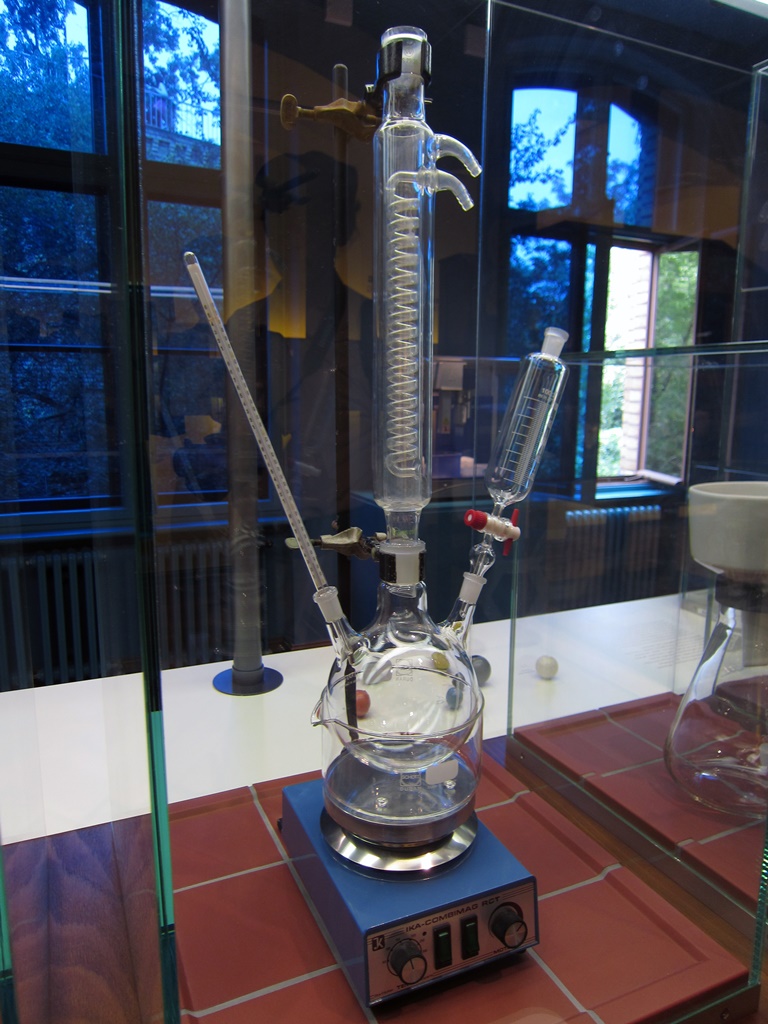
Chemical Apparatus
Early Aspirin Containers
Outdoor exhibits were also on display in a pleasant parklike area.

Water Tower and Smokestack
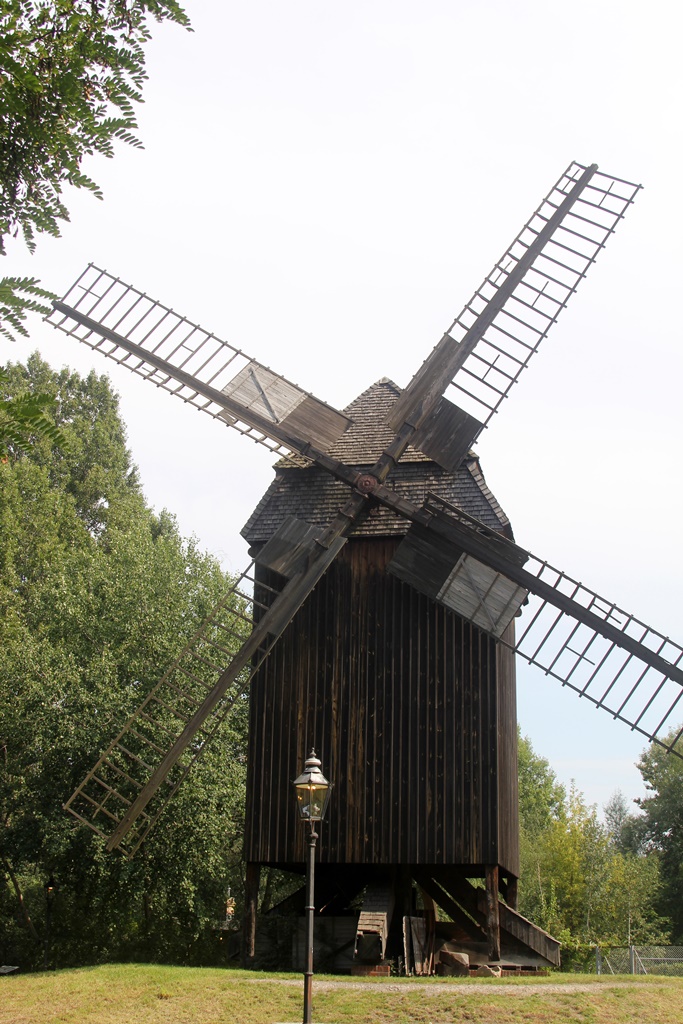
Windmill
Back indoors, a gigantic (and functional) steam engine was on display. Demonstrations
were given periodically, but not while we were looking at it.
Balancier Steam Engine
There were also exhibits on various modes of transportation, from the
personal to the large-scale.
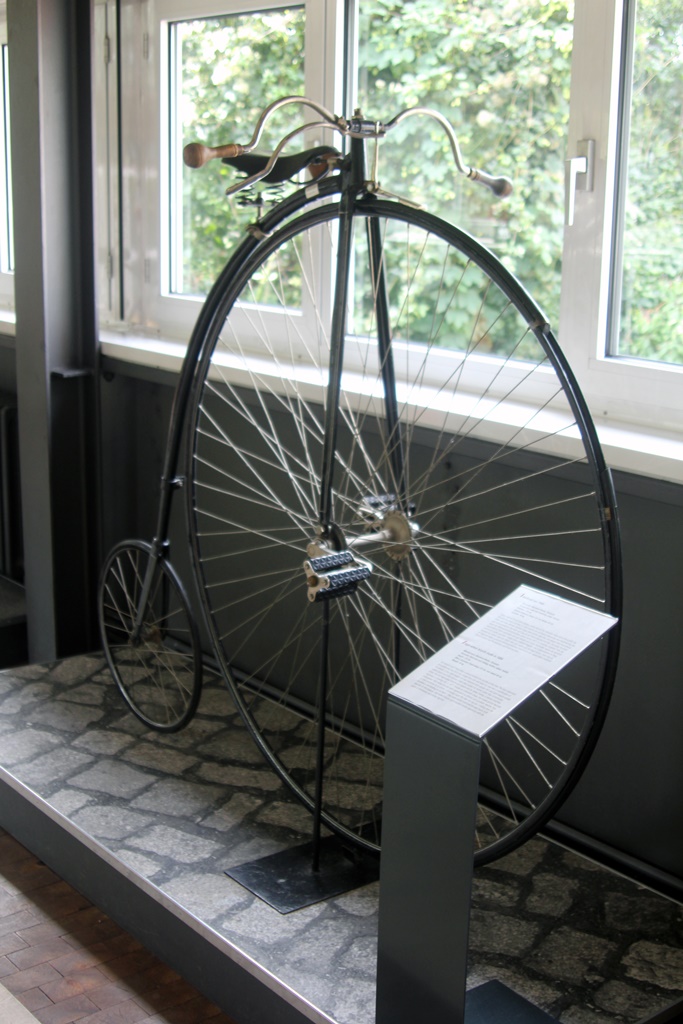
High-Wheel Bicycle (1886)
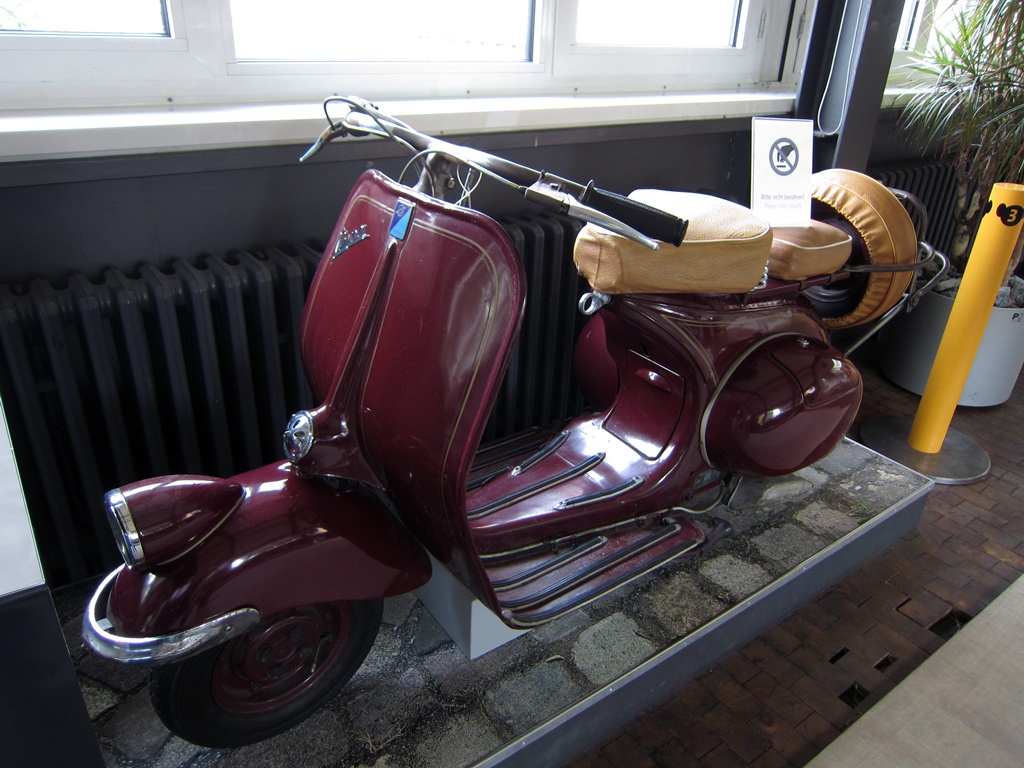
A Vespa
Das Abschlammen im Lokschuppen ist verboten!
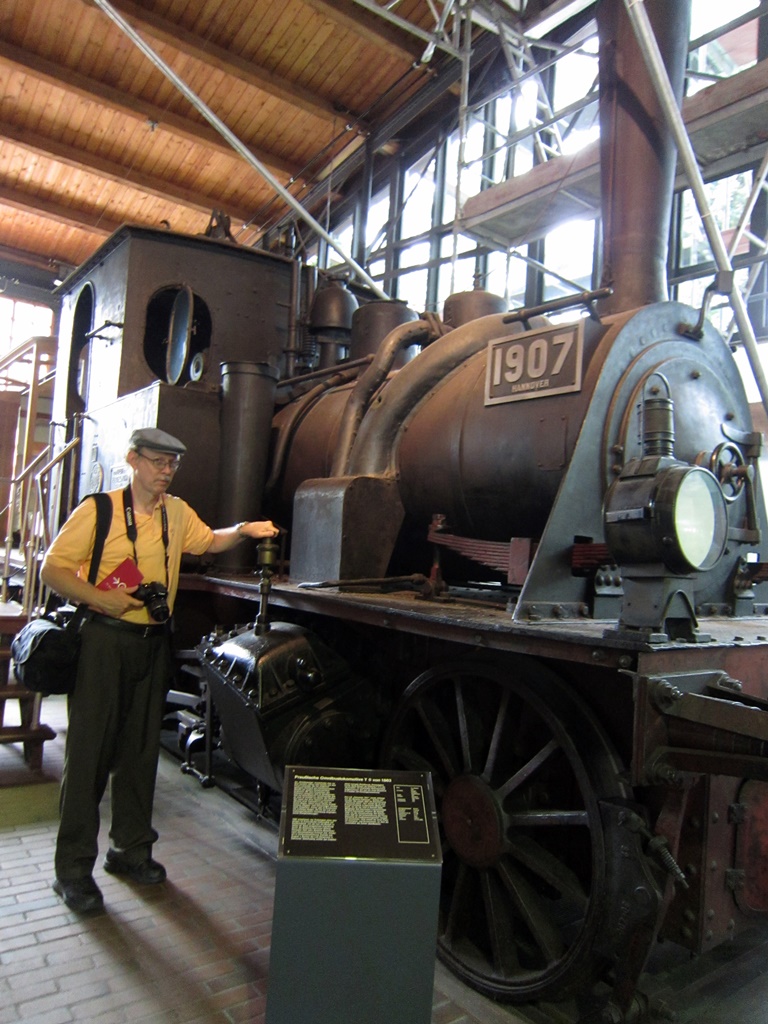
Bob Adjusting Steam Locomotive

Steel Wheels
A large new building holds exhibits on nautical transportation and
aviation (including wartime aviation).
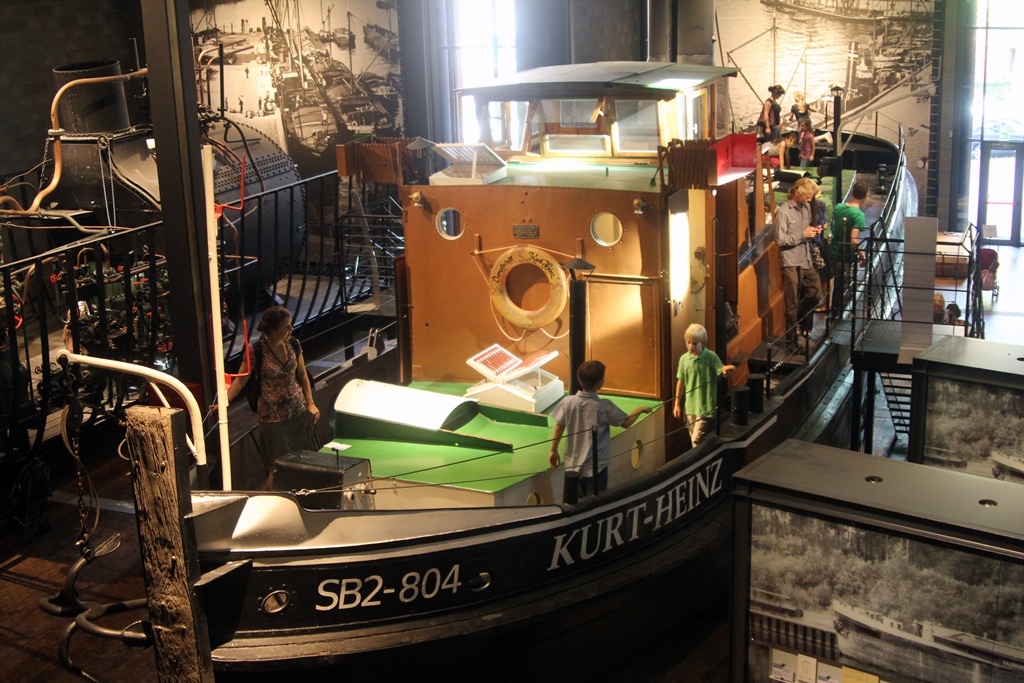
Visitors Aboard the Kurt-Heinz
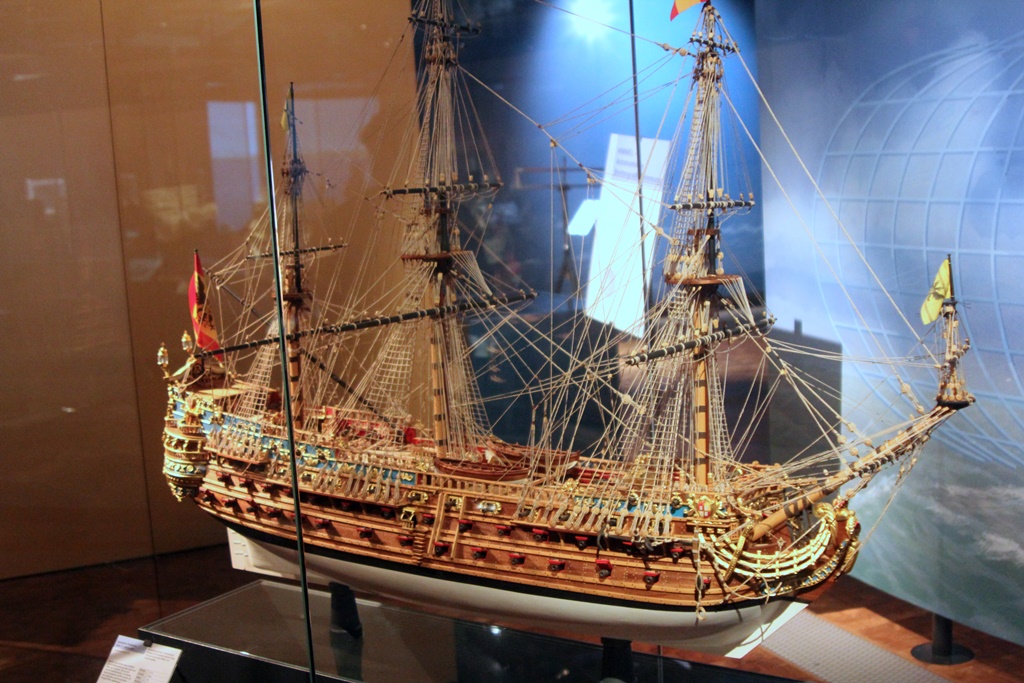
Sailing Ship Model
Boat and Airplanes

Lufthansa Ju-52 Passenger Plane
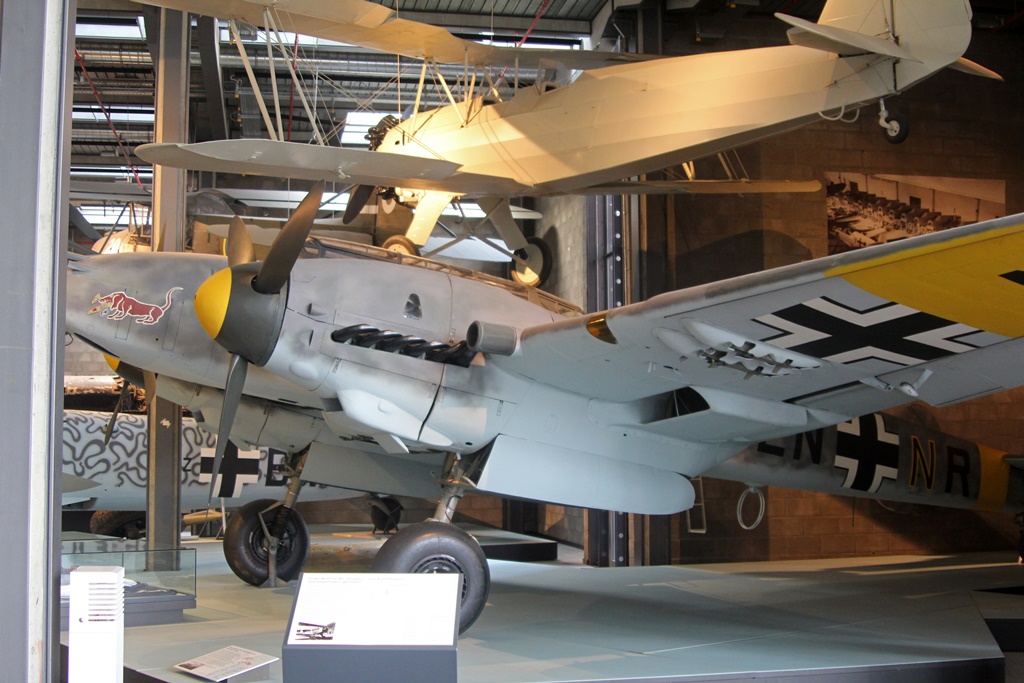
Messerschmitt Bf 110
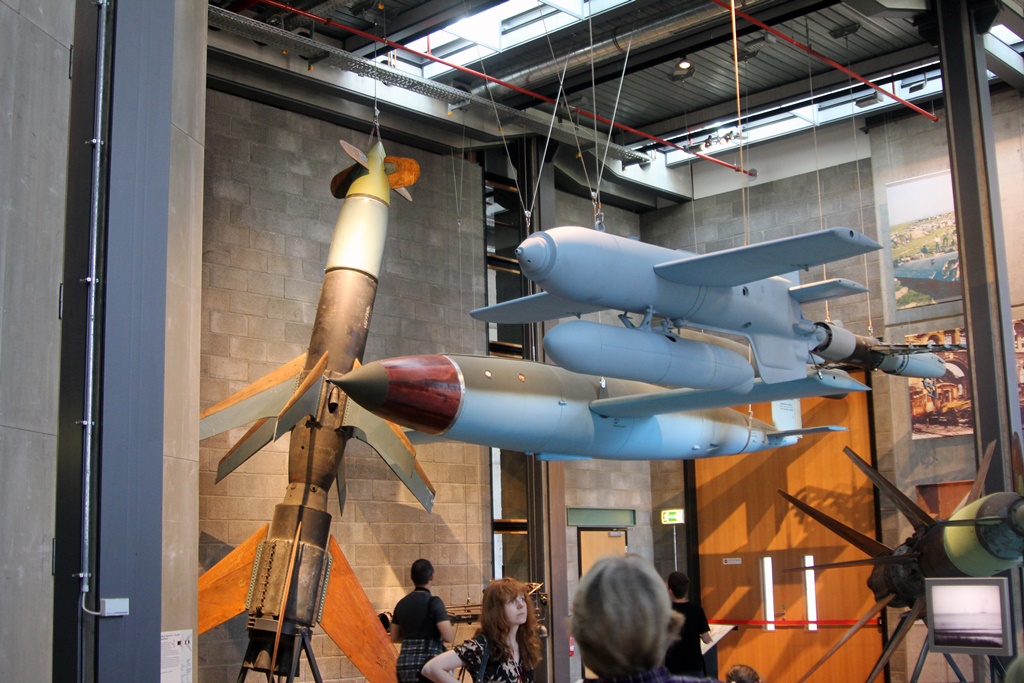
"Flying Bombs"
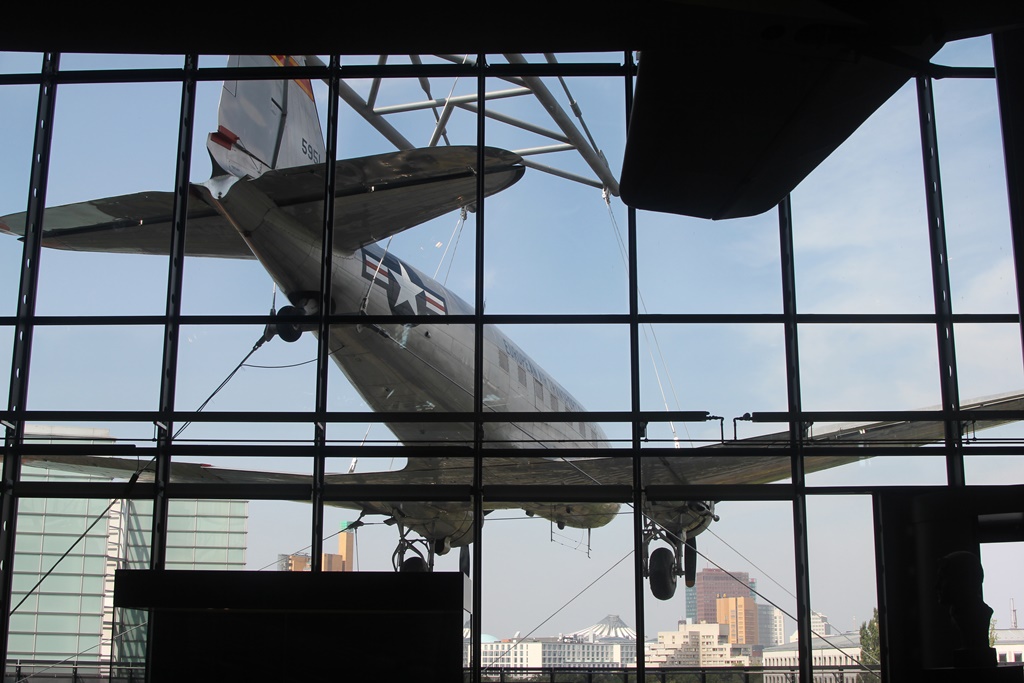
Douglas C-47 Raisin Bomber
Just making our way through all these exhibits was fatiguing, but we rested
and recharged at a small restaurant in the museum. This prepared us for our
next destination, the Berlin Gemäldegalerie.
Resting and Recharging

